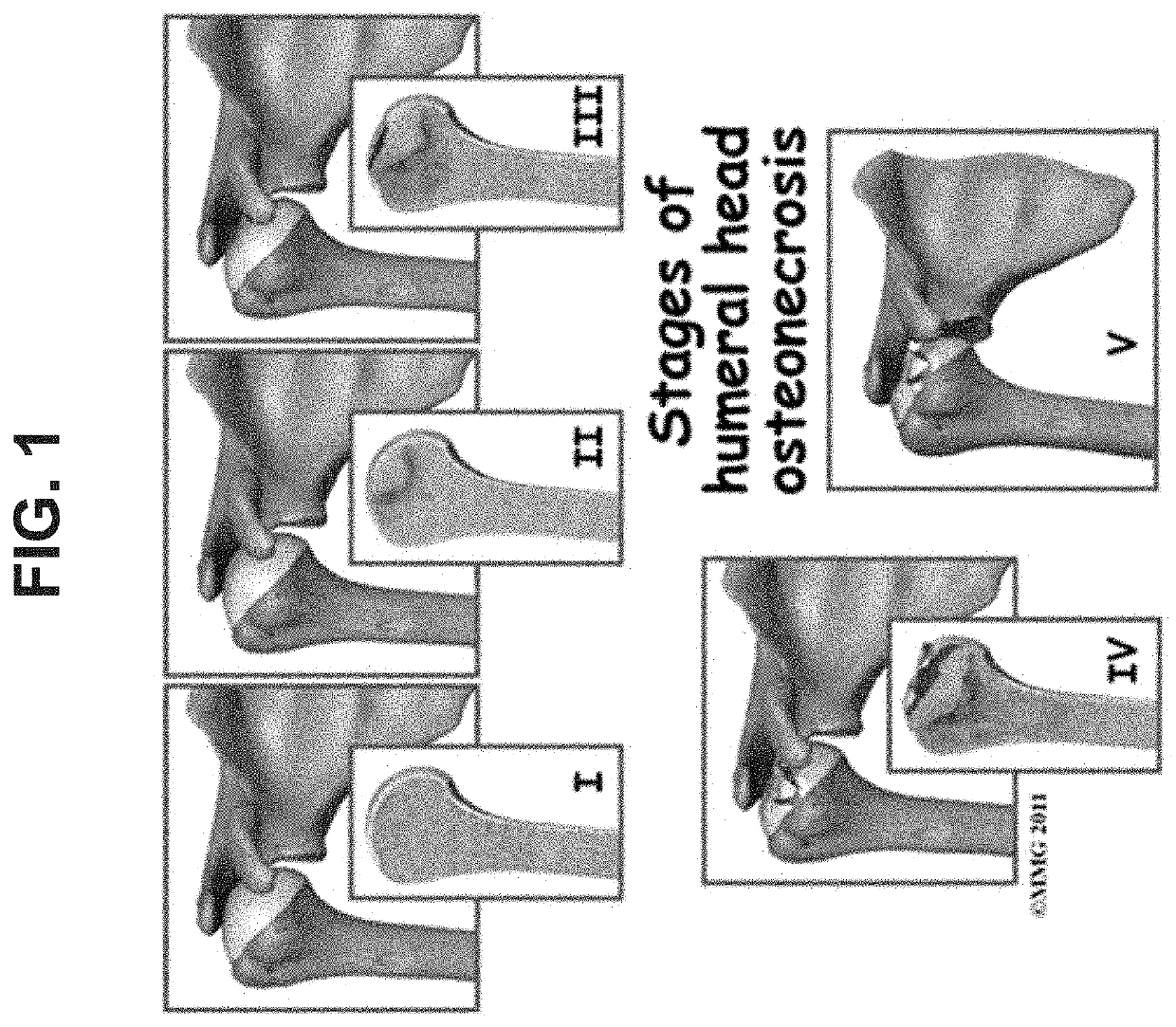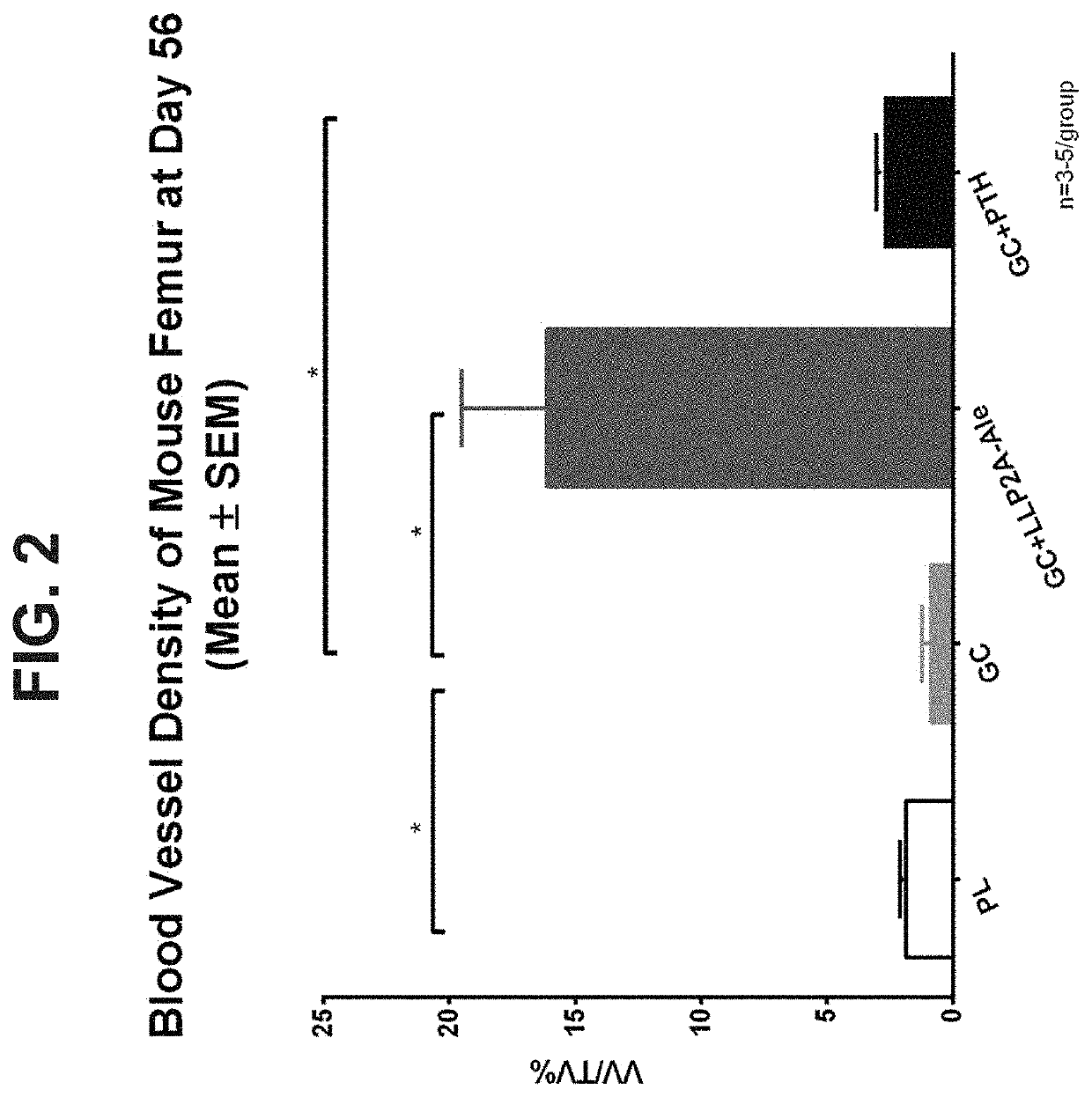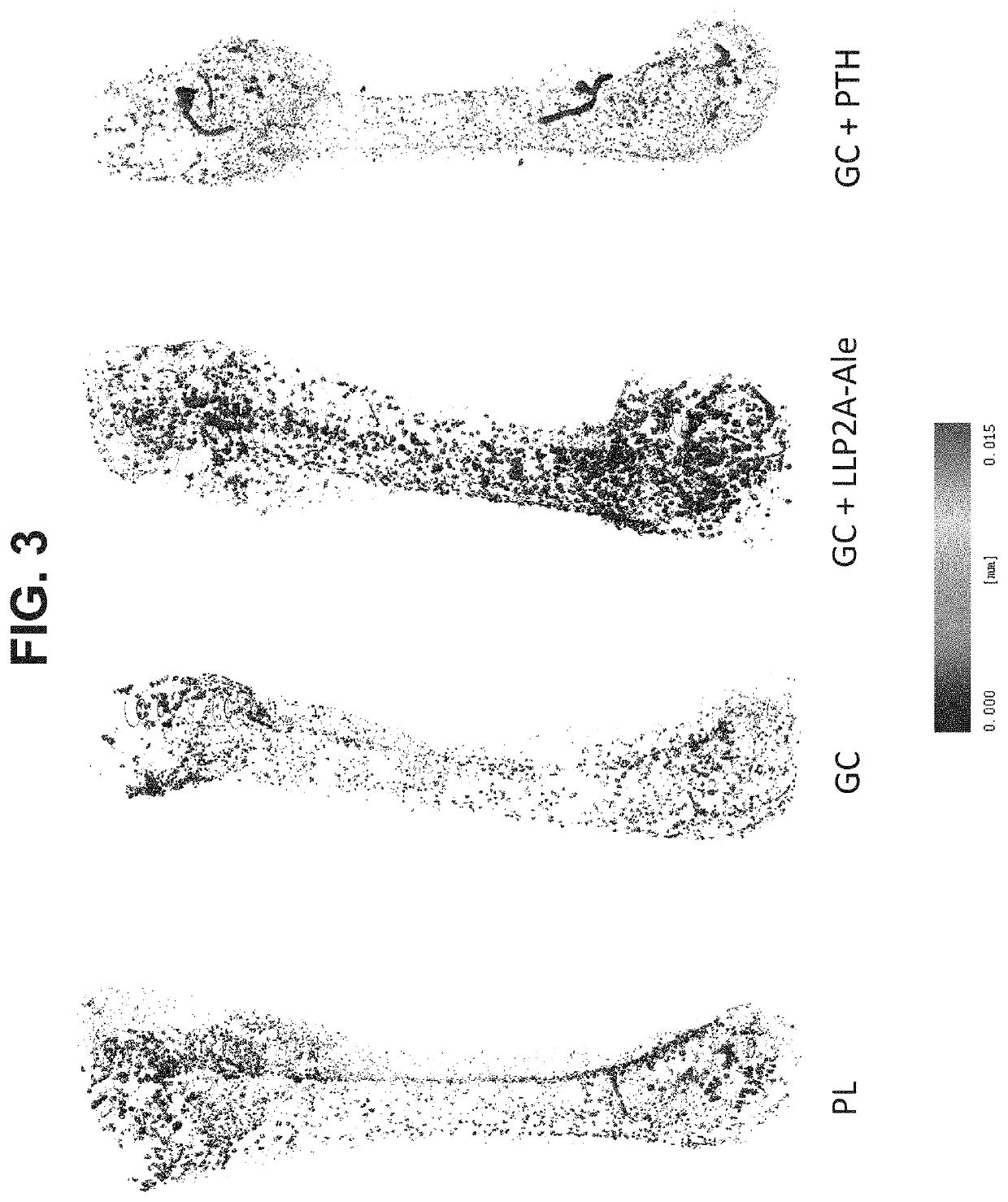Methods of treating osteonecrosis with llp2a-bisphosphonate compounds
a technology of llp2abisphosphonate and compound, which is applied in the direction of unknown materials, peptides, drug compositions, etc., can solve the problems of bone collapse and the destruction of the joints surrounding the bones, and achieve the effect of preventing cell death
- Summary
- Abstract
- Description
- Claims
- Application Information
AI Technical Summary
Benefits of technology
Problems solved by technology
Method used
Image
Examples
example 1
[0131]Use of LLP2A-Ale in a 56 Day Mouse Model of Glucocorticoid-Induced Osteonecrosis
[0132]Osteonecrosis is a disease that is characterized by reduced blood flow to bones, particular to bones in joints. The reduced blood supply results in the death and breakdown of the bone. FIG. 1 depicts the stages of glucocorticoid induced osteonecrosis. Osteonecrosis is classified in stages (I through V) referring to how far the disease has progressed. With atraumatic osteonecrosis, initially there is a reduction in blood supply, which results in the death of bone cells, then collapse of the bone (in FIG. 1, the humerus) because the area of dead bone cannot support the use of the bone.
[0133]The efficacy of LLP2A-Ale was evaluated using a mouse model of glucocorticoid-induced osteonecrosis. 4-month-old male mice were treated for 56 days with glucocorticoids. At day 28, a group of mice was treated with either LLP2A-Ale or PTH for an additional 28 days. Blood vessel density of the femur was measur...
example 2
[0137]Use of LLP2A-Ale in a 90 Day Mouse Model of Glucocorticoid-Induced Osteonecrosis
[0138]This study was conducted to determine whether LLP2A-Ale can reverse or treat established traumatic osteonecrosis in mice.
[0139]Materials and Methods:
[0140]Animals and Experimental Procedures
[0141]The efficacy of LLP2A-Ale was evaluated over a 90 day study using a mouse model of glucocorticoid-induced osteonecrosis. Seven week-old male mice (BALB / c (n=80, Jackson laboratories, USA) were housed in a sanitary ventilated animal room maintained at 20° C. with a 12-hour light / dark cycle. All animals were handled according to the USDA animal care guidelines with the approval of the UC Davis Committee on Animal Research. The mice were given water and standard commercial rodent chow (22 / 5 Rodent Diet; Teklad, Madison, Wis.) ad libitum. The animals were weight randomized to either a placebo group (fresh water) or glucocorticoid only (4 mg / L dexamethasone (Dex) in drinking water) and treated for 90 days...
example 3
[0156]Use of LLP2A-Ale and hPTH (1-34) to Prevent Glucocorticoid-Induced Osteonecrosis and Reduction in Vascularity in a Mouse Model
[0157]This study was conducted to determine whether administration of LLP2A-Ale or hPTH (1-34) over a 30-day or 45-day period can prevent glucocorticoid-induced osteonecrosis and maintain the vasculature within the distal femur in mice.
[0158]Materials and Methods:
[0159]Animals and Experimental Procedures
[0160]The efficacy of LLP2A-Ale and hPTH (1-34) was evaluated over a 30 and 45 day study using a mouse model of glucocorticoid-induced osteonecrosis. Seven week-old male BALB / c mice were randomized into Placebo group (fresh water), glucocorticoid only (4 mg / L dexamethasone (Dex) in drinking water), Dex+250 μg / kg LLP2A-Ale, Dex+500 μg / kg LLP2A-Ale, or Dex+40 μg / kg hPTH (administered five times a week) for 30 or 45 days. At day 30 or 45, the mice were sacrificed. Study endpoints included histological evidence of osteonecrosis, bone mass, and prevalent bloo...
PUM
| Property | Measurement | Unit |
|---|---|---|
| size | aaaaa | aaaaa |
| vascular density | aaaaa | aaaaa |
| area | aaaaa | aaaaa |
Abstract
Description
Claims
Application Information
 Login to View More
Login to View More - R&D
- Intellectual Property
- Life Sciences
- Materials
- Tech Scout
- Unparalleled Data Quality
- Higher Quality Content
- 60% Fewer Hallucinations
Browse by: Latest US Patents, China's latest patents, Technical Efficacy Thesaurus, Application Domain, Technology Topic, Popular Technical Reports.
© 2025 PatSnap. All rights reserved.Legal|Privacy policy|Modern Slavery Act Transparency Statement|Sitemap|About US| Contact US: help@patsnap.com



